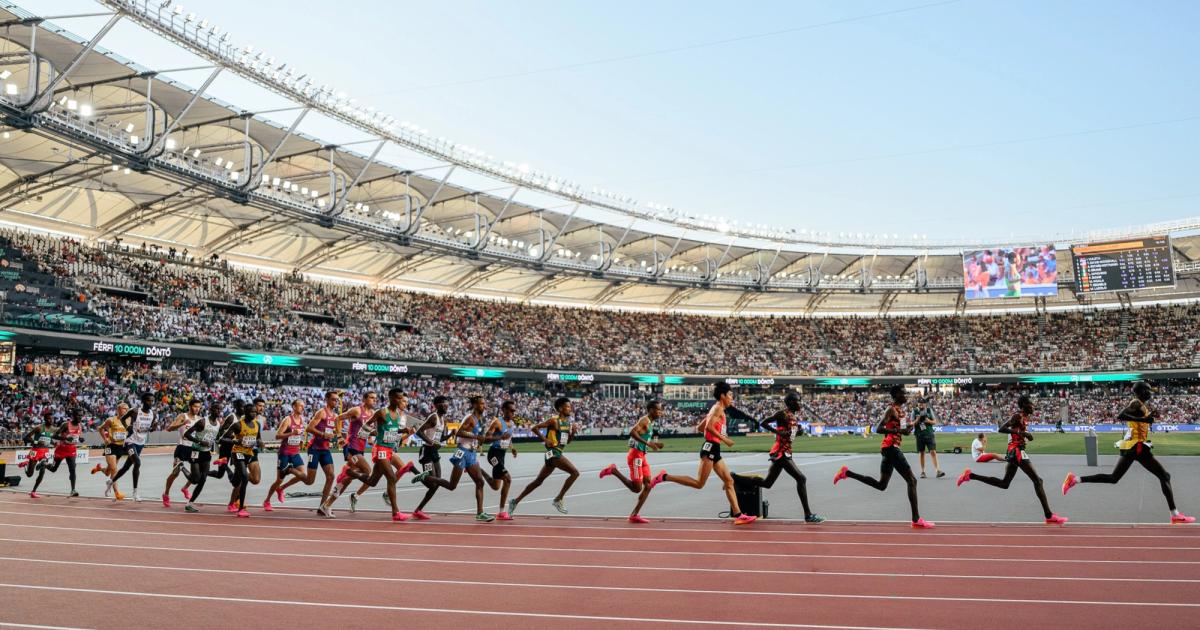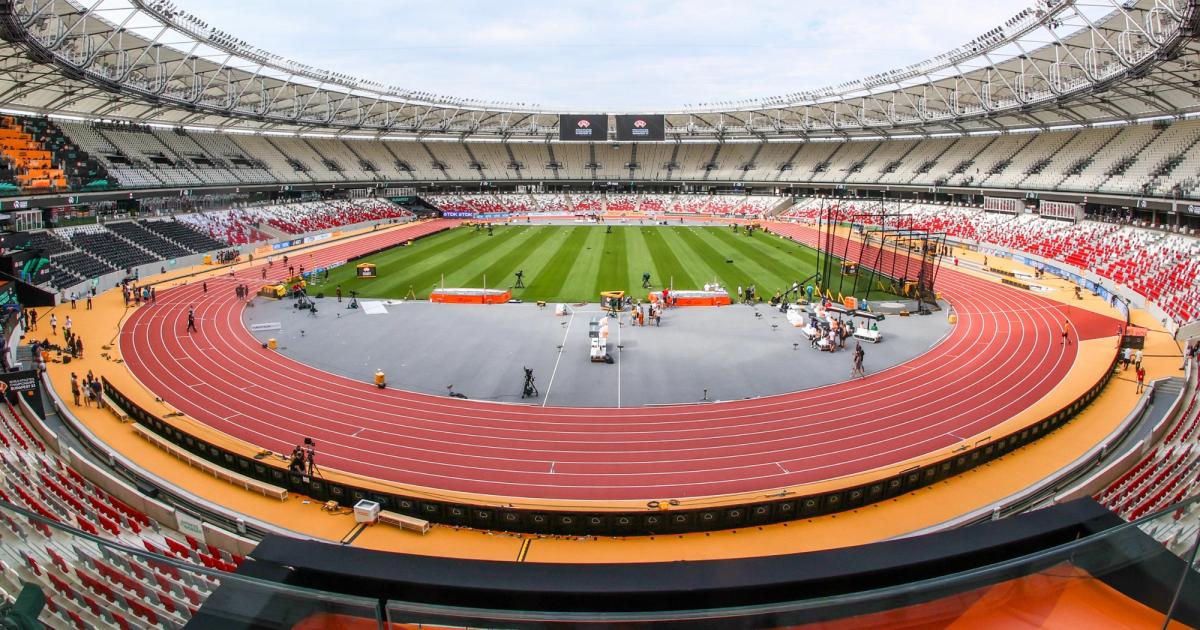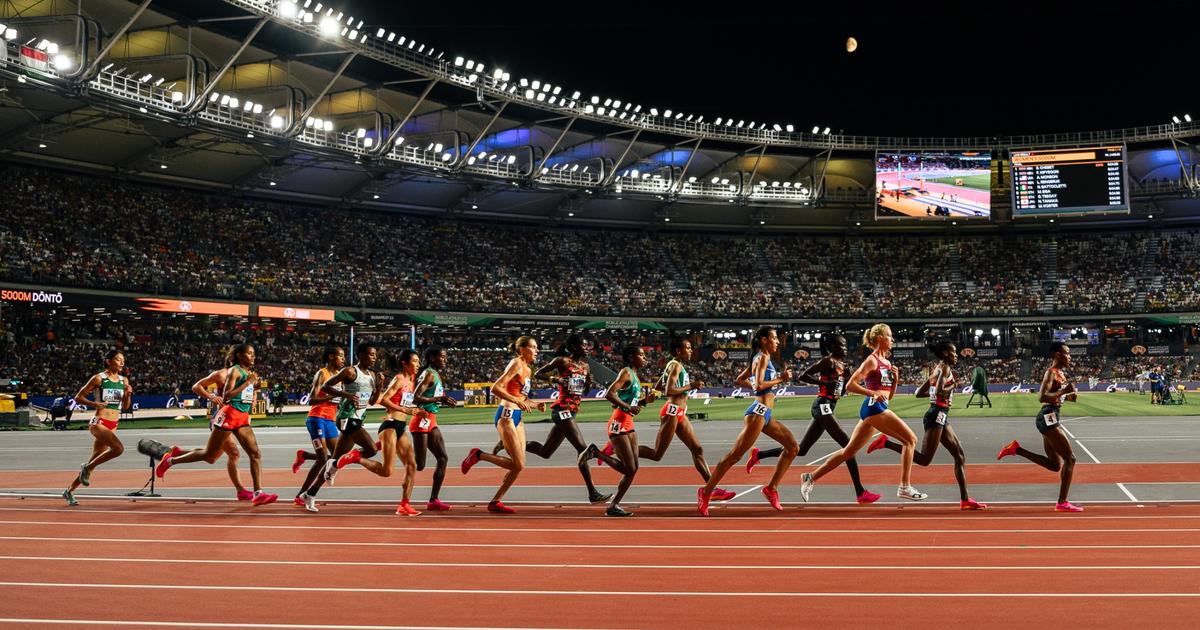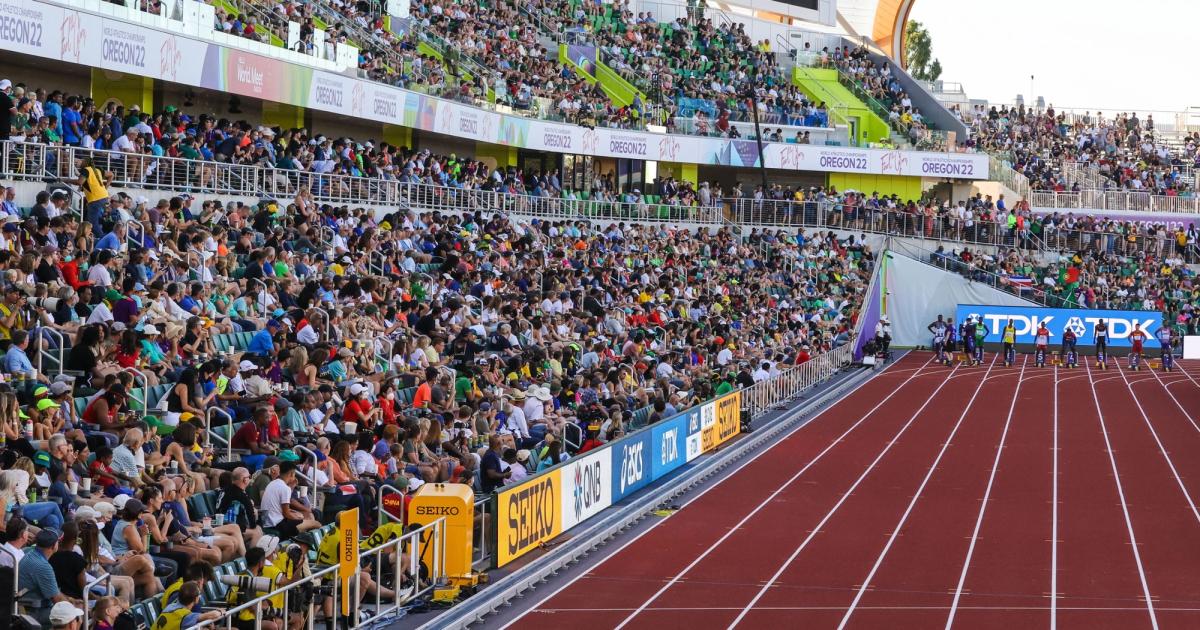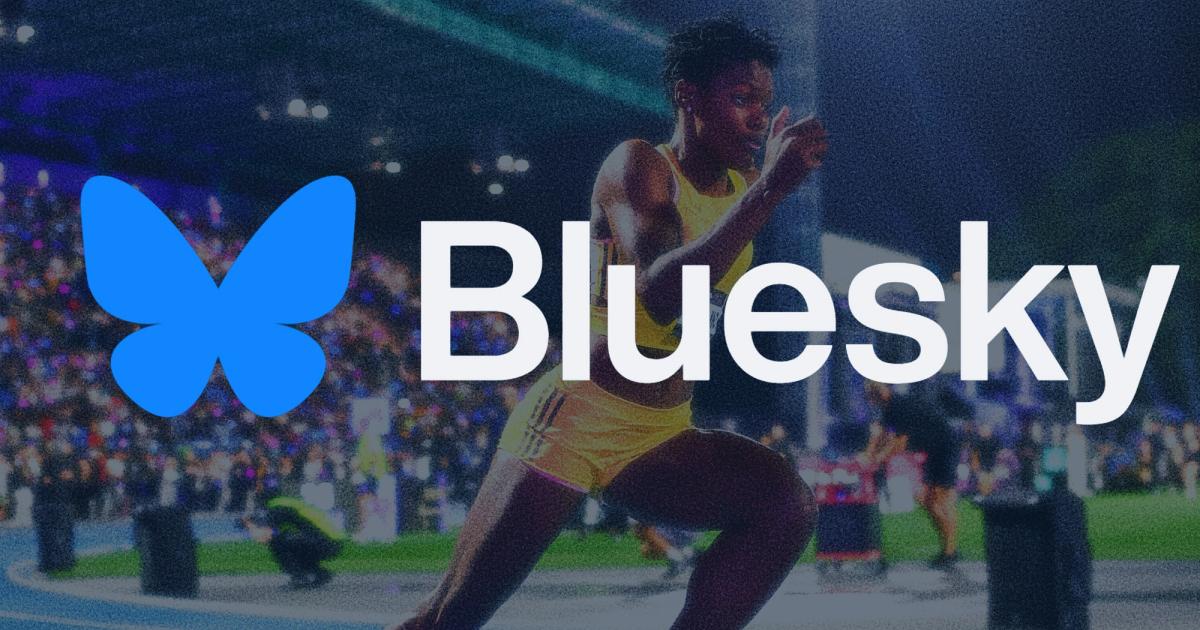By Preet Majithia
December 1, 2024
The first World Athletics Ultimate Championships are set to take place in 2026 in Budapest from September 11th to 13th, crucially, as the final event of the season. And its new, unique format has raised a lot of questions. But before you dive in, make sure you have read our primer which covers all the details announced by World Athletics.
The end of the ‘off’ year
The World Athletics Ultimate Championships help put to rest the perennial question in the minds of track and field junkies: what is the point of an off year? Most other Olympic sports tend to hold championships on an annual basis, and of course the NFL, the NBA, soccer’s Premier League, or even more comparable individual sports like golf or tennis do not have ‘off’ years for major competition.
The intense nature of training for track and field and the fine tuned peaking required to elicit athletes’ best performance when it really matters means that having a year for athletes to reset both mentally and physically can be beneficial for many. However, there are other athletes for whom an off year can be a bit of a curse, with their best form coming in a year where there are no global medals to be won. Donovan Brazier and the enforced off year of 2020 come to mind!
Prize money and timing
The enhanced prize money, with $150,000 available to the winners of each event, is another positive move, both to incentivize top athletes to show up and face off, and add to the sense that the sport is more serious about itself and looking to evolve in an era where pursuing a career as a running YouTuber or an Instagram fitness coach could easily net you way more income than becoming a global medallist.
The hefty purse should help entice some top athletes to keep going after the Olympic season in 2028, which may also be an improvement over this year’s Diamond League final. However, there will undoubtedly still be numerous newly crowned Olympic Champions that will want to shut down their seasons immediately after LA ‘28.
Championship format
The three hour window each night for three days makes for a fairly packed schedule, but at the same time, not attempting to showcase every discipline does make things a bit more straightforward. Hopefully with the reduced schedule of events, and only semi-finals and finals to get through, there will be more opportunity to introduce each athlete fully and build up narratives within each event. And this format should also allow space for the field events (at least those which are included) to be featured as part of both the in-person experience and the broadcast rather than just passing by in the background of a track race.
Shorter meet durations seem to be something of a new trend, aligning broadly with the Grand Slam Track and Athlos NYC formats. Big thinkers have clearly targeted brevity as the most critical aspect in terms of changing the way the sport is presented to make it more accessible and add more hype.
Athlete selection and qualifying
One of the key announcements is that in each event there will be much fewer athletes competing, with eight entrants in straight finals, and sixteen over two rounds in some shorter events. Qualifying will be done almost entirely based on world rankings, with no limit on the number of athletes per country. The reigning World Champion, Olympic Champion, and Diamond League Champion will get wild card bids if not ranked high enough.
One concern compared to normal championship formats is whether some events could be dominated by too many athletes from one or two countries. A quick look at the 2024 season-ending world rankings, for example, shows five American women in the top sixteen for the 100m and four American men. In the women’s 200m, 12 of the 16 fastest women in 2024 are American, but only 6 of those are ranked in the top 16.
In the 5000m, there are seven Ethiopians and four Kenyans in the top sixteen in the rankings for both men and women in 2024 (albeit this event could be limited to top 12) so there could be a similar crowding effect. Like the Olympics, the lack of pacers may cause a bigger shuffle between rankings and results – but first athletes like Jakob Ingebrigtsen, Nadia Batocletti, and Grant Fisher have to get accepted into the meet.
For field eventers who tend to compete often – with the top athletes typically competing on the Diamond League anyway – the rankings already tend to be a fair reflection of form in a given season.
The key point is the difference between running fast times as a one-off or at low key meets versus running fast times at higher-profile meets such as the Diamond League. In 2024, with the focus on making the Olympic team (or on performing well at NCAAs), some top American athletes opted to limit their international travel and frequency of meets. There was little incentive to show up at every Diamond League for an athlete with the automatic standard in the Olympics and no need for extra prize money.
It will be interesting to see if more American sprinters target the Diamond League in 2026, since placing high at competitive meets provides a significant rankings boost to improve the chances of qualifying for the Ultimate Championships. This is especially significant if there are no Team USA spots to make at a national championship, so a high ranking is much more desirable.
Currently, Diamond League meets are tacitly blessed by World Athletics as the highest level of competition as they generate the most bonus points for world rankings of any regular-season meets. But if the Grand Slam Track and/or Athlos models are successful in 2025, they may want to lobby hard to be given similar consideration by World Athletics the following year.
The exclusion of events
Unsurprisingly, World Athletics’s announcement of a condensed program and exclusion of many throwing events generated initial outrage. WA hasn’t chosen to explain the choices in any detail (other than to fit everything into three evenings of three hour sessions), but it is worth doing some educated guesswork about what their reasoning might be.
The normal global championship events omitted from the Ultimate Championships are the 3000m steeplechase, 10,000m, shot put, discus, women’s hammer, men’s triple jump and combined events (as well as the out-of-stadium events such as the race walks and marathon).
It’s worth noting that the smaller fields and smaller event list may result in much of the world not getting representation at these “world championships.” Smaller countries with only one or two superstars might not have any athletes at all if their top star’s event is not included.
Track events: All of the track events WA have chosen to include just happen to mirror what is included in Grand Slam Track. This is likely no coincidence, with World Athletics likely wanting to show that they still have the most power to gather the best athletes in the sport together in one place. If they needed to drop some track events to fit within the tight schedule, then the 3000m steeplechase and the 10,000m are relatively long races and hence, the obvious candidates when looking to shorten the TV window. The 10,000m athletes can always chase a high ranking in the 5000m, and whilst you have to feel sorry for the likes of steeplechase stars Winifred Yavi and Soufiane El Bakkali, they don’t appear to have the global star power to swing the needle towards including their event (but, to be fair, you could make the same argument about the 400m hurdles a few short years ago). The steeplechase also got booted from both Grand Slam Track and Athlos, so there’s less need overall for World Athletics to lock down the top stars.
Vertical jumps: Pole vault and high jump are probably the most popular of the field events, being both spectacular to watch and easy to interpret success, with dramatic third attempts to keep viewers on the edge of their seats. Stars like Gianmarco Tamberi and Mondo Duplantis are some of the most engaging stars in the whole of track and field, and Ukrainian Yaroslava Mahuchikh is both a beloved sports hero for an embattled nation and a newly-minted world record holder.
Throws: As shown by WA President Sebastian Coe’s highly-publicized trip to India, there is a huge desire to continue building an athletics audience on the subcontinent and the javelin provides access to over 1.6 billion potential fans across India and Pakistan thanks to Neeraj Chopra and Arshad Nadeem. On the women’s side, it is widely expected that Hiruka Kitaguchi will become the face of track and field in 2025. She is Japan’s best hope for a gold medal in their home World Championships, and it makes sense to keep the nation and its legions of fans interested in this new championship format given that ASICS, a Japanese brand, is also a corporate sponsor of World Athletics.
With only three evenings, and a desire to give space to all the events on show, this likely means there was only room on the schedule for three ‘long throws’ events. You have to feel sorry for the discus throwers, and even more so for the women’s hammer throwers, who don’t get to compete on the Diamond League circuit either.
More inexplicable is perhaps the exclusion of the shot put, where Ryan Crouser is undoubtedly a superstar, and it doesn’t interfere with the other field or track events. The only possible explanation here seems to be the lack of time to give it breathing space in the schedule – a rather flimsy excuse.
Horizontal jumps: Only three of the four horizontal jumps events have been included, another casualty of the condensed format. The women’s triple jump has the possibility of bringing a gold medal to South America in the form of Yulimar Rojas, so it makes sense to include this event to try and get some engagement from that continent. The women’s long jump preserves gender balance with the exclusion of the women’s hammer throw (and who wouldn’t want Tara Davis-Woodhall and her cowboy hat), so that leaves a choice between men’s long jump and men’s triple jump. This could have gone either way and it’s harder to guess a particular reason for choosing one over the other.
Out-of-stadium events: Sorry race walk fans… not sure race walk was ever getting a look in here! The logistics of organizing out-of-stadium events is complicated, and it doesn’t fit neatly into the brief three-hour evening format being adopted.
Overall thoughts
The World Athletics Ultimate Championships certainly feel like they could be a significant value-add to the sport, but its success will depend heavily on all the top athletes turning up, not a guarantee given the other incentives available through events like Grand Slam Track and Athlos.
It does feel like adding a morning session or fourth day of competition could accomplish many of the same goals while allowing space for all the in-stadium events to be included, which feels like a bit of a loss. And the stakes are very high for the inaugural edition, which will have to prove itself in a big way to have any shot of directly competing against the Olympics on the calendar only two years later.
The event teases innovation in how the sport is presented, and it will be interesting to see if said “innovation” extends beyond simply shortening the program. But the potential for success is clearly there. Assuming all the stars do make an appearance, this could be a spectacular way to end the season.
___________________
Keep up with all things track and field by following us across Instagram, X, Bluesky, Threads, and YouTube. Catch the latest episodes of the CITIUS MAG Podcast on Spotify and Apple Podcasts. For more, subscribe to The Lap Count and CITIUS MAG Newsletter for the top running news delivered straight to your inbox.

Preet Majithia
Preet is a London based accountant by day and now a track fan the rest of the time. Having never run a step in his life he’s in awe of all these amazing athletes and excited to help bring some attention to the sport.
